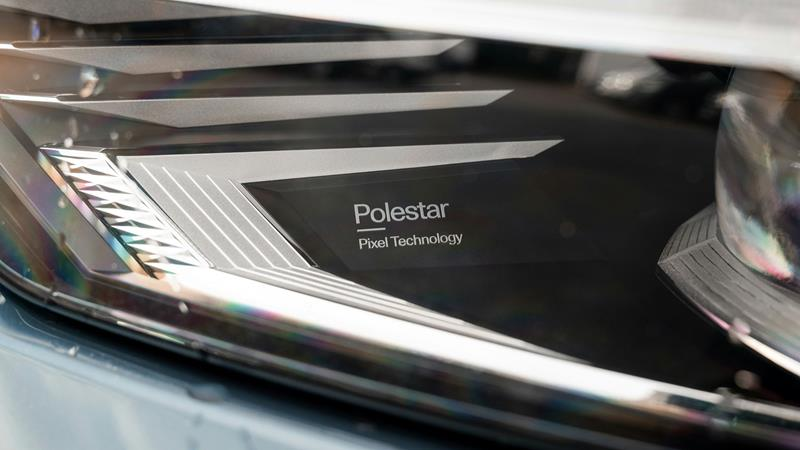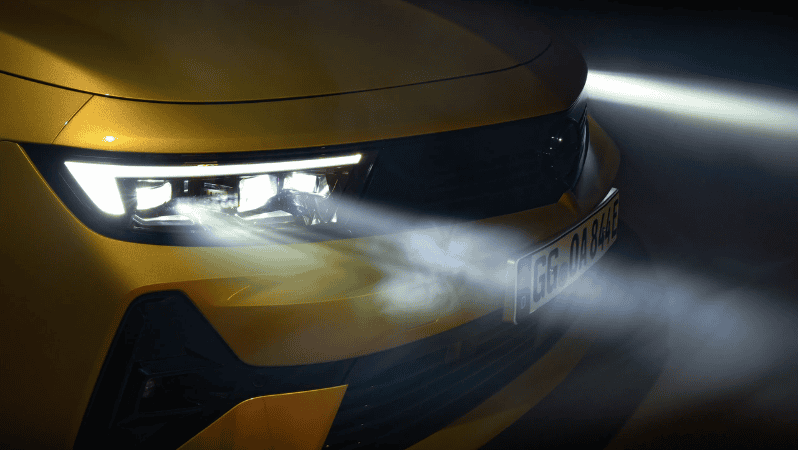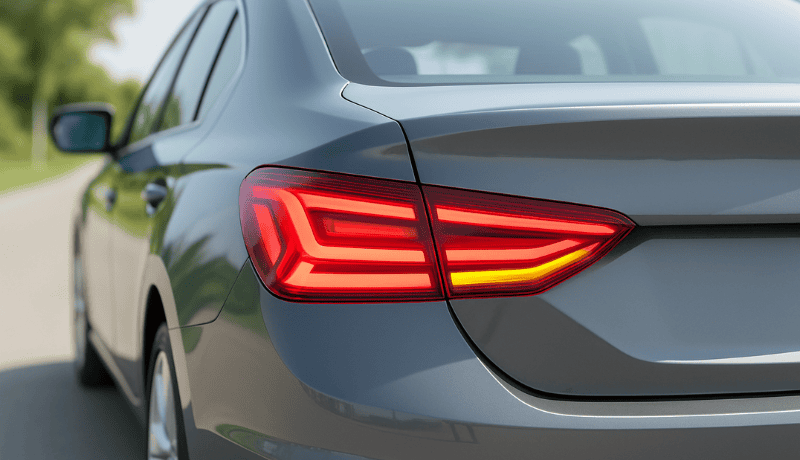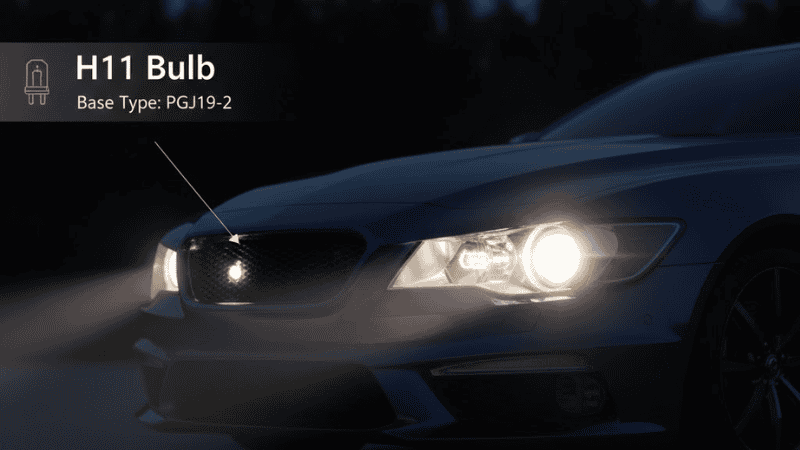Many agree that brighter headlights make driving a better experience. However, many drivers are concerned that brighter headlights lead to more glare, making night driving a worse experience for everyone else. This is one of the things pixel LED headlights are changing.
Pixel LED technology uses precisely controlled LEDs to have as much light as possible on the road at all times, without blinding the driver ahead or oncoming traffic.
This article explains what pixel LED headlights are, how they work, and why they will change night driving safety. This article also examines the pros and cons of the technology plus how the technology could be used in the future to make night driving even better.
What is a Pixel LED Headlight?
A pixel LED headlight can selectively dim parts of its light beam to avoid blinding other drivers on the road.

This is possible because each headlight contains multiple LEDs that can be controlled individually or in groups to create zones within the light beam that are lit differently.
Pixel LED technology is available from different car manufacturers. The specific features are different, but they all share the principle of using multiple light sources that can be selectively turned off to control light distribution near other cars.
This type of headlight is only possible using LEDs. The minimal heat output and small sizes of LEDs make it possible to have thousands of individual light sources close to each other. LEDs are also more responsive in electronic systems.
How Pixel LED Headlights Work
To understand how pixel LED headlights work, it’s important to know how regular, non-pixel, headlights work.
How Regular Headlights Work

Regular headlights have two separate settings, high beam and low beam. Low beams are angled downwards, which illuminates the ground near the car and doesn’t blind other drivers.
High beams are angled straight ahead. This setting casts more light and covers a greater distance. However, the angle of the light causes it to be reflected off the mirrors of cars and also casts light onto oncoming vehicles. This is called glare.
To avoid causing glare, drivers are expected to change to low beams when in proximity to other vehicles. This is tedious and also means that the road isn’t always well-lit.
How Pixel Headlights Work
Each pixel headlight contains multiple light-emitting diodes (LEDs). The exact number and sizes of LEDs vary significantly. For example:
- The Peugeot E-3008 has 22 LED pixels in each headlight
- The Polestar 2 has 84 pixels
- Porsche vehicles can come with 16,384 micro-LEDs

Instead of two independent light modes, the individual light sources in a Matrix LED headlight can be maintained at different levels of brightness at the same time.
This ability is combined with clever algorithms that turn off or dim specific pixels to create a beam pattern that goes around other cars.
The algorithm constantly recalculates and changes which pixels should be on or off to keep up with the position and number of cars on the road. Some headlights can shade out up to five areas, protecting five different drivers from glare.
The best part is that this feature works with the high beams. This ensures that while some zones are shaded, the rest of the road remains fully illuminated for maximum visibility. Cars are detected by the light from their headlights or taillights by cameras mounted in the windshield.
Pros and Cons of Pixel LED Headlights
Pixel LED headlights have many benefits, but also a few drawbacks and teething issues. Both of these are explored below.

Pros of Pixel LED Headlights
The benefits of pixel LED headlights include:
- No glare: Pixel LED headlights operate at full brightness without blinding other drivers. This makes them less of a nuisance and the safest option, even compared to the low beams in some cars.
- Energy efficiency: LED lighting is already more energy efficient than traditional headlight options. Pixel technology ensures only the amount of light needed is cast, reducing energy consumption further when high beams are on.
- Improved visibility: Pixel headlights can be kept in high beam mode constantly, ensuring maximum visibility for drivers.
- Convenience: The reduced glare and improved visibility are achieved without the driver having to adjust headlight settings manually. This is convenient and allows the driver to focus on important driving functions.
- Aesthetics: LED headlights already have a sleek look to them, but pixel technology takes it to another level. The light pixels can be arranged in unique designs that make vehicles stand out on the road.
Cons of Pixel LED Headlights

Accessing and using pixel LED headlights has come with several challenges. These include:
- Cost: Pixel technology is a new thing in automotive lighting. Manufacturers are still charging more for them to cover the high costs of development and manufacturing. In some cases, you can only get these as a premium addition when buying a new car.
- Replacement: LED headlights can outlast your car thanks to the durability of LEDs. Unfortunately, there are no guarantees you won’t lose a headlight for some reason. Getting a replacement headlight for this new technology could be very difficult.
- Driver Confusion: Drivers used to traditional headlight controls may find it difficult to adjust to the different control methods used by pixel headlights.
- Legislation: In countries such as the US, the adoption of adaptive headlights has been slow due to outdated legislation. Cars with pixel lights in the US can’t be sold with the software that enables their advanced features.
How Pixel LED Headlights Improve Automotive Safety

Pixel headlight technology is one of the most important additions to automotive safety in recent years. Night driving is a lot more dangerous than driving during the day. However, these headlights reduce many of the dangers of driving at night, making it a lot safer.
1. Improved Visibility
With pixel LED headlights, drivers can always have their high beams on without inconveniencing other drivers. This means better visibility when driving on dark country roads, making it easier to spot pedestrians and hazards by the side of the road.
2. Glare-Free High Beams
Glare is said to be a major contributor to night-time accidents. The glare-free high beams with pixel LED headlights don’t blind other drivers, making them safer.
3. Obstacle Detection

Improved visibility makes it easier to spot obstacles on the road, but pixel technology also pairs well with other adaptive driving features to make it easier to see obstacles when cornering. In the future, obstacles might even be highlighted to make them stand out to drivers.
4. Improved Concentration
Drivers don’t have to constantly think about which headlight modes to use or when and where to switch from low to high beams. Pixel headlights use sensors to determine the optimal amount of light needed, depending on factors such as the presence of cars and your speed.
This means the driver can focus on steering the vehicle on the road instead of fiddling with the headlight controls.
Future Trends and Developments
As cutting-edge as pixel LED headlights seem, manufacturers have only just scratched the surface of this technology’s potential. Some premium cars have already or are trying to implement features such as:
- Lane illumination: Creates a light ‘carpet’ that highlights your lane on the road.
- Welcome and exit lights: Unique light patterns that are projected when you enter or exit the car.

- Image projection: Casting images on the road using the headlights. This can be used to cast a speed limit sign in front of the driver in case they didn’t see the sign and other navigation information.
- Hazard highlight: Hazards illuminated by the headlights are given distinct patterns that make them more apparent to drivers.
The introduction of autonomous, i.e., driverless, vehicles will require features such as the automatic high beam because there will be no driver to manually change lighting modes. Pixel LED headlights will make this a lot easier.
Conclusion
Pixel LED headlights enable drivers to have brighter headlights while causing less glare, even compared to traditional low beams. This is a win-win situation for car owners and other road users. However, improved safety is just one of many benefits of this technology.
Manufacturers are implementing pixel headlights in different ways, but the core features and benefits are the same. Despite some legislative hurdles, pixel LED headlights are undoubtedly going to set the new standard for headlights in the coming years.
Switch to Pixel LED Headlights With Carlightvision
Pixel LED headlights are still foreign to many OEM/ODM distributors. This is why you need the experts at Carlightvision.
With over 15 years of headlight manufacturing experience, we stay on the leading edge of automotive lighting technology and ensure our clients keep pace with key industry trends. Contact us today to see how we can help you join the pixel LED headlight train.



